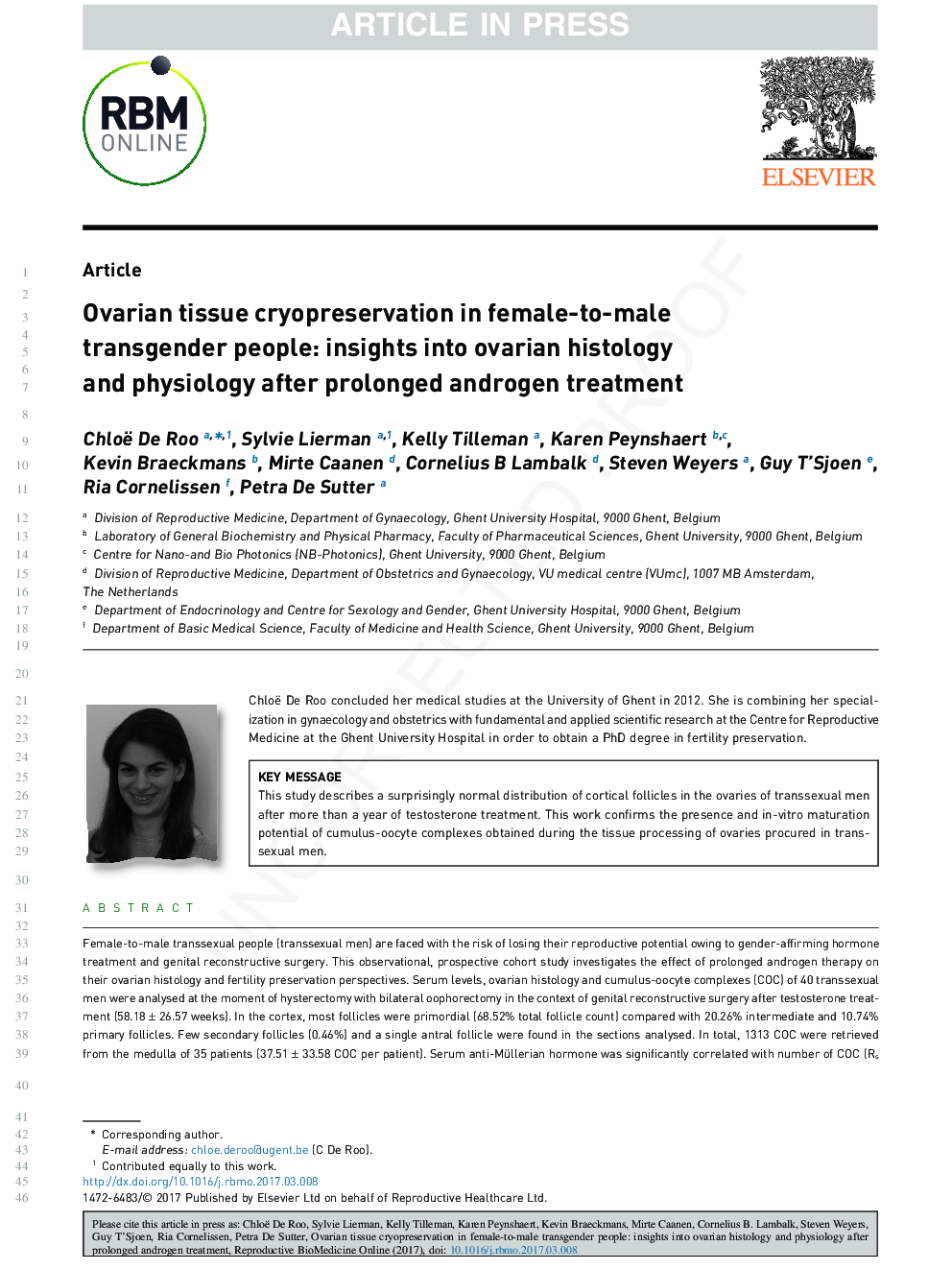| Article ID | Journal | Published Year | Pages | File Type |
|---|---|---|---|---|
| 5696761 | Reproductive BioMedicine Online | 2017 | 10 Pages |
Abstract
Female-to-male transgender people (trans men) are faced with the risk of losing their reproductive potential owing to gender-affirming hormone treatment and genital reconstructive surgery. This observational, prospective cohort study investigates the effect of prolonged androgen therapy on their ovarian histology and fertility preservation perspectives. Hormone serum levels, ovarian histology and cumulus-oocyte complexes (COC) of 40 trans men were analysed at the moment of hysterectomy with bilateral oophorectomy in the context of genital reconstructive surgery after testosterone treatment (58.18 ± 26.57 weeks). In the cortex, most follicles were primordial (68.52% total follicle count) compared with 20.26% intermediate and 10.74%primary follicles. Few secondary follicles (0.46%) and a single antral follicle were found in the sections analysed. In total, 1313 COC were retrieved from the medulla of 35 patients (37.51 ± 33.58 COC per patient). Anti-Müllerian hormone serum levels were significantly correlated with number of COC (Rs 0.787, P < 0.001). After 48âh in-vitro maturation, 34.30% metaphase II oocytes were obtained, with 87.10% having a normal spindle structure. In conclusion, the cortical follicle distribution in trans men, after more than a year of testosterone treatment, seems to be surprisingly normal. This work confirms the presence and in-vitro maturation potential of cumulus-oocyte complexes.
Keywords
Related Topics
Health Sciences
Medicine and Dentistry
Obstetrics, Gynecology and Women's Health
Authors
Chloë De Roo, Sylvie Lierman, Kelly Tilleman, Karen Peynshaert, Kevin Braeckmans, Mirte Caanen, Cornelius B. Lambalk, Steven Weyers, Guy T'Sjoen, Ria Cornelissen, Petra De Sutter,
